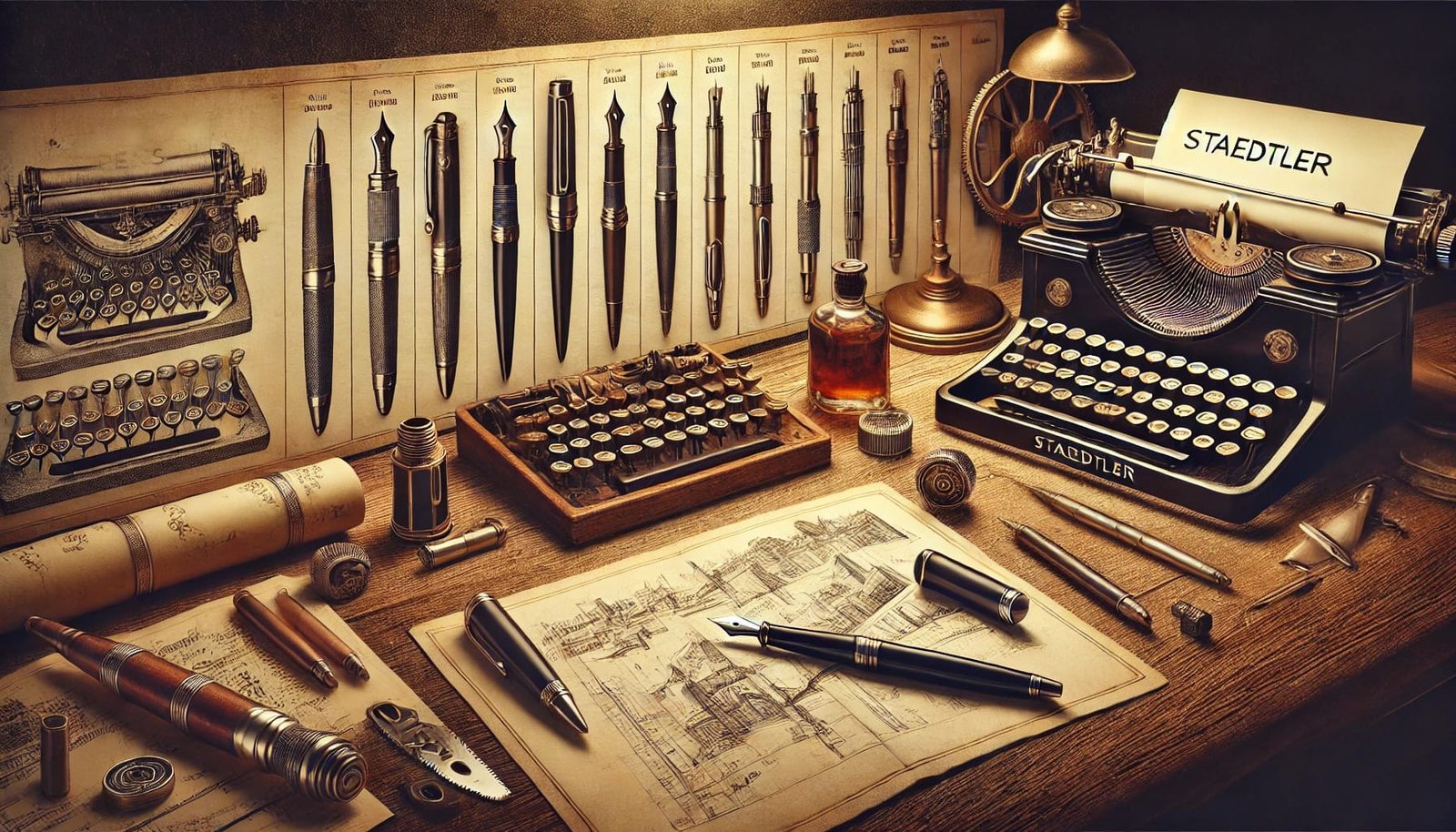The History of Staedtler: A Legacy of Excellence in Writing Instruments
THE JOURNEY
Introduction
Staedtler is one of the most renowned names in the stationery industry, synonymous with high-quality pens, pencils, and writing accessories. With a history spanning over 185 years, Staedtler has continually evolved, innovating its product line to meet the needs of artists, students, and professionals alike. The company’s legacy is rooted in German craftsmanship and precision, making it a leading brand in the global writing instrument market. This document explores the extensive history of Staedtler, its evolution, key innovations, and its impact on the industry.
Origins and Founding (1835-1900)
The foundation of Staedtler dates back to 1835 when Johann Sebastian Staedtler, a skilled pencil maker, established the company in Nuremberg, Germany. However, the Staedtler family’s association with pencil manufacturing can be traced even further back to 1662, when Friedrich Staedtler was recognized as one of the earliest pencil makers in the region.
Johann Sebastian Staedtler’s goal was to produce high-quality pencils by refining graphite and clay mixtures to create superior writing tools. His efforts led to the creation of the Staedtler Mars brand, which quickly gained recognition for its excellent craftsmanship. By the late 19th century, the company had already begun expanding its product range and international reach.
Expansion and Industrialization (1900-1950)
The early 20th century was a period of significant growth for Staedtler. As industrialization spread across Europe, the company embraced modern production techniques to improve efficiency and quality. During this period, Staedtler introduced the Mars Lumograph pencil, which became a standard tool for artists and draftsmen.
In 1925, Staedtler introduced its first mechanical pencil, revolutionizing the way people used pencils by eliminating the need for constant sharpening. The company also expanded into ink-based writing instruments, further diversifying its product line. By the mid-20th century, Staedtler had established itself as a global brand, exporting products to countries across Europe, Asia, and North America.
Innovation and Global Expansion (1950-2000)
The post-World War II era saw rapid technological advancements, and Staedtler capitalized on this momentum by investing in research and development. The company introduced a variety of new products, including:
-
Permanent markers – Widely used in offices and industrial settings.
-
Rollerball and ballpoint pens – Designed for smooth writing and durability.
-
Colored pencils and pastels – Aimed at artists and designers.
-
Highlighters and fine liners – Becoming essential tools for students and professionals.
In 1962, Staedtler introduced the famous Noris pencil, recognizable by its yellow-and-black striped design. The Noris pencil became particularly popular in schools and offices due to its reliability and affordability.
During the 1980s and 1990s, Staedtler expanded into digital technology, developing pens and styluses compatible with early computer systems. This period also saw the company increase its commitment to sustainability by using eco-friendly materials and reducing waste in its manufacturing processes.
21st Century: Sustainability and Technological Advancements (2000-Present)
As the world entered the 21st century, Staedtler continued to innovate while maintaining its reputation for high-quality craftsmanship. Some of the key advancements in this era include:
-
Eco-friendly initiatives: Staedtler introduced wood-cased pencils made from sustainable forests and developed non-toxic inks and plastics for its pens and markers.
-
Digital integration: The company developed digital writing tools, such as styluses designed for tablets and interactive screens, catering to the growing demand for digital artistry.
-
Ergonomic designs: Many of Staedtler’s pens and pencils now feature improved grips and shapes, making writing and drawing more comfortable and efficient.
-
Revolutionary products: The Staedtler Triplus series, including fineliners and color pens, gained popularity among artists and students for their smooth ink flow and ergonomic design.
Staedtler’s Impact on the Writing Instrument Industry
Staedtler’s influence on the writing instrument industry is undeniable. The brand has become synonymous with precision, durability, and quality. Some of the key contributions of Staedtler include:
-
Advancements in pencil manufacturing: The company pioneered new techniques for blending graphite and clay to achieve optimal hardness and smoothness.
-
Innovations in mechanical pencils: Staedtler’s technical pencils have set the standard for architects, engineers, and artists.
-
Diverse product offerings: From traditional wooden pencils to high-tech digital tools, Staedtler caters to a wide audience.
-
Sustainability leadership: By incorporating eco-friendly materials and processes, the company has set a benchmark for sustainable stationery production.
Staedtler’s Journey
Staedtler’s journey from a small pencil-making business in 1835 to a global leader in writing instruments is a testament to its commitment to quality, innovation, and sustainability. The company has continually adapted to changing consumer needs, ensuring its products remain relevant in an increasingly digital world. Today, Staedtler stands as a symbol of excellence in the stationery industry, with a rich legacy that continues to inspire creativity and precision in writing and drawing.
Shop now
